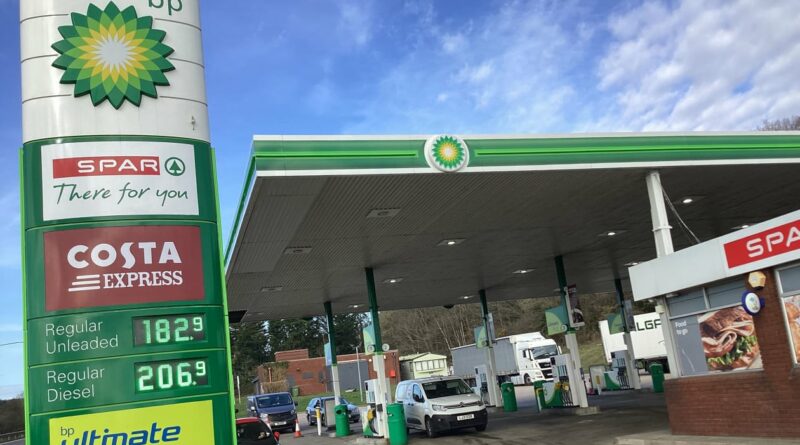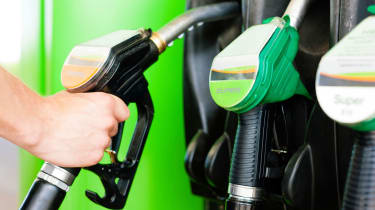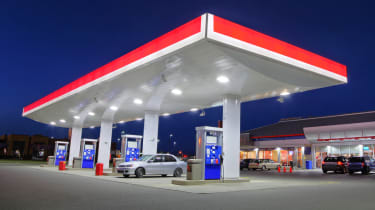UK petrol and diesel prices: latest fuel costs explained
Fuel retailers have lowered margins for now, but will be scrutinised closely as consumers count the cost of filling up.
Mike Rutherford
Petrol and diesel prices have been on the rise again recently – but pain at the pumps has been eased by retailers dialling back margins to ‘normal levels’.
For drivers breathing a collective sigh of relief as fuel prices eased back from record highs in summer 2022, the latest rises still come as a shock. The cost per barrel of oil rose to near $100 in September 2023, a movement attributed to OPEC producer nations reducing supply. Whether price rises continue depends on a multitude of factors, but RAC Fuel Watch suggests that concerns about the health of the Chinese economy, and also the end of the US summer driving season, could both dampen overall demand and therefore prices.
-
How to find the cheapest petrol and diesel near you
Data revealed previously by the RAC showed supermarkets had doubled their margins on petrol and diesel since Russia invaded Ukraine, intensifying cost of living pressures for drivers and adding to UK inflation. The biggest four supermarkets – Asda, Tesco, Sainsbury's and Morrisons – were taking average margins of 4.7p per litre before Russia attacked its neighbour, with a rate of 3.7p for petrol and 5.7p for diesel. That increased to 9.3p for petrol and 10.8p for diesel, the RAC said.
During 2022, the margin supermarkets charged for petrol climbed to almost 11p, and it hit a whopping 20p in the period after a new record average pump price of 191.5p was hit on 3 July. Consumers at the time blamed high global oil prices, rather than supermarket greed, for the painfully high cost of filling up.
For historical perspective, the RAC says margins for supermarkets on fuel were as low as 2.3p per litre in 2016, increasing to 5.7p in 2019 and staying around that level throughout the pandemic. In 2022 it jumped by over 54 per cent, the RAC says, averaging almost 11p a litre
Live fuel price-comparison tech to be introduced
The Competitions and Markets Authority has called for a new government body to monitor prices, plus new rules forcing filling stations to share up-to-the-minute price details online. The measures were immediately supported by the government, with Energy Security Secretary of State Grant Shapps announcing steps would be taken to put the measures into law.
As the law stands, filling stations only need to advertise prices on their forecourts, which means drivers must drive between stations to compare prices. The CMA recommendation is for new ‘compulsory open data requirements’ that would force fuel retailers to provide current prices to drivers in an instantly available format that can be used by satnavs or third party mobile phone apps.
“Instant access to prices via a fuel finder scheme should drive down prices and help people find the cheapest fuel,” the CMA report says. It has also called for the new monitoring body to hold the industry to account, and recommend further action if competition continues to weaken in the market.
While the CMA says it has found no evidence to suggest active collusion between supermarkets, it reported their average margins increased by six pence per litre from 2019-2022. Meanwhile margin hikes to diesel cost drivers an extra 13p per litre across the first five months of 2023.
What makes up the price of UK fuel?
The price of fuel can be divided into three sections; the taxes imposed by the Government, the costs of drilling, refining and transporting, and the profit margins for the fuel companies.
In more recent times, however, fluctuating fuel prices have caused some analysts to question whether supermarket fuel really is cheaper. In September 2022, RAC fuel spokesman Simon Williams explained that, “there are lots of smaller forecourts which are now selling fuel much cheaper than the supermarkets. We would urge everyone to shop around for the best deals rather than simply assuming the supermarkets are the lowest because they have been in the past.” The Competitions and Markets Authority are looking at supermarket fuel pricing in a bit to “get to the heart of the issues” around apparently high fuel prices.
There are persistent rumours that supermarket fuel contains fewer additives and is of lesser quality than fuel from traditional forecourts, but there’s little hard evidence of this. All fuel sold in the UK has to abide by the standards set in the Motor Fuel Regulation.
Why is fuel so expensive on motorways?
Motorway fuel stations argue the reason their prices are higher is that many of them are open 24 hours a day and offer more services than a regular forecourt. Motorway fuel stations also pay high rent prices for the buildings they operate.
In more remote areas, fuel is often more expensive because of the higher transport and supply costs, but according to RAC fuel spokesman Simon Williams, this doesn’t apply to motorway stations: “We can see no reason why motorway fuel should be so much more expensive. In fact, arguably it is much easier from a delivery point of view than getting fuel to urban filling stations.”
Why is diesel more expensive than petrol?
Although diesel and petrol are taxed the same by the Treasury, historically diesel has been more expensive than petrol, as domestic refineries have struggled to meet demand. This has forced the UK to import diesel from other countries at a greater rate than petrol. In addition, diesel prices are pushed up by the cost of the additives that go into the fuel.
-
Best diesel cars 2023
Furthermore, the gap between UK petrol and diesel prices widens during the winter. The end of the US “driving season” means retailers have a surplus of petrol they can’t export, so they sell it here at a lower price. Diesel demand, meanwhile, increases across continental Europe, where the fuel is commonly used in heating oil.
Recently, the influx of cheap diesel from countries like Saudi Arabia has turned the tide, swinging diesel wholesale prices closer to that of petrol, and bringing the pump price down with it. However the fact that we get a higher percentage of diesel from Russia than petrol means the advantage has swung the other way again.
What's your view on fuel prices in the UK? Do we pay too much for our petrol and diesel? What would you do about it? Join the debate in our comments section below…
Source: Read Full Article



 How to find the cheapest petrol and diesel near you
How to find the cheapest petrol and diesel near you


 Best diesel cars 2023
Best diesel cars 2023

